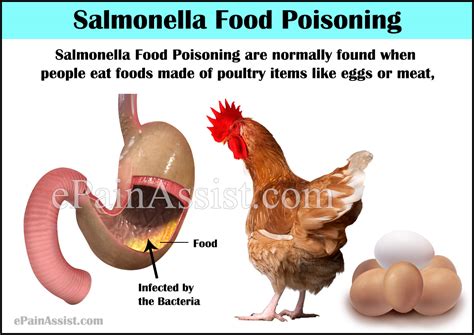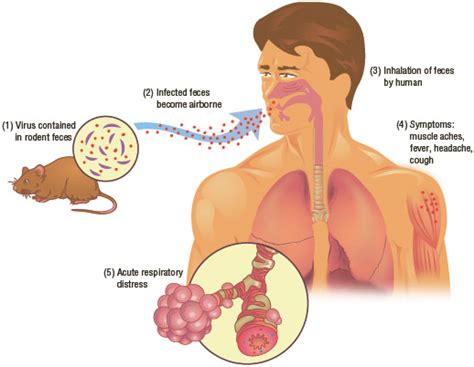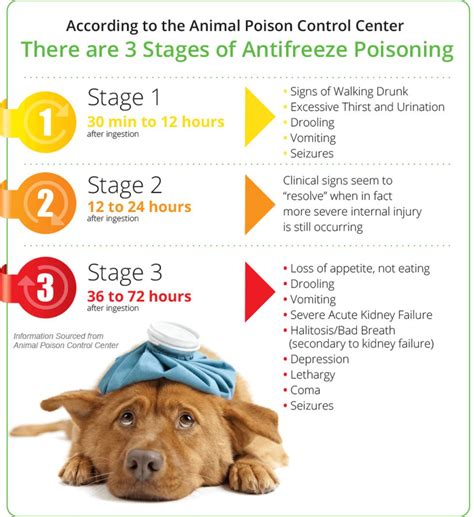
Salmonella Poisoning
Understanding Salmonella poisoning
Salmonella poisoning, also known as salmonellosis, is a common type of foodborne illness caused by the bacterium Salmonella. It can be found in a wide range of food products, particularly those that come from animals, such as eggs, poultry, meat, and dairy products. Understanding the causes, symptoms, and prevention measures of salmonella poisoning is essential for maintaining good food safety practices and protecting our health.
Causes of Salmonella poisoning:
Salmonella bacteria can contaminate food at different stages of production, processing, and handling. The primary source of salmonella contamination is usually from infected animals. Animals carrying the bacteria can shed it in their feces, which can then contaminate the environment, water sources, or crops. When these contaminated products are consumed raw or insufficiently cooked, the bacteria can enter the human body and cause infection.
Symptoms and signs of Salmonella poisoning:
Salmonella poisoning typically manifests within 12 to 72 hours after consuming contaminated food or water. Common symptoms include diarrhea, abdominal cramps, fever, and vomiting. In some cases, individuals may also experience headaches, muscle aches, and dehydration. The severity and duration of symptoms can vary depending on the individual’s immune system and the amount of bacteria ingested.
Preventing Salmonella contamination:
Preventing salmonella contamination starts with proper food handling and hygiene practices. This includes regular handwashing with soap and water before and after handling food, especially raw meat or poultry. Cooking food to appropriate temperatures is also crucial in killing salmonella bacteria. It is advised to use separate cutting boards and utensils for raw and cooked foods to avoid cross-contamination. Additionally, consuming pasteurized dairy products and eggs that have been properly cooked can reduce the risk of salmonella infection.
Treating Salmonella poisoning:
If you suspect that you have salmonella poisoning, it is crucial to seek medical attention. Your healthcare provider will evaluate your symptoms and may order laboratory tests to confirm the presence of the bacteria. Treatment typically involves addressing dehydration through oral rehydration solutions or, in severe cases, intravenous fluids. Antibiotics may be prescribed in certain situations, but it is important to note that some strains of salmonella have developed resistance to antibiotics.
In conclusion, understanding salmonella poisoning is important for promoting food safety and preventing infection. By being aware of the causes, symptoms, and preventive measures, we can reduce the risk of experiencing the unpleasant and potentially dangerous effects of this foodborne illness. Practicing good hygiene, safe food handling, and seeking timely medical attention can help us stay healthy and protect ourselves from salmonella contamination.
Causes of Salmonella poisoning
Salmonella poisoning is a common foodborne illness that affects millions of people worldwide every year. It is caused by the bacteria called Salmonella, which is commonly found in the intestines of animals and humans. The main way people get infected with Salmonella is by consuming contaminated food or water. Let’s explore some of the major causes of Salmonella poisoning.
Contaminated Food: One of the primary causes of Salmonella poisoning is consuming contaminated food. Raw or undercooked poultry, eggs, and meat products are frequently associated with Salmonella outbreaks. The bacteria can also be present in unpasteurized milk, cheese, and other dairy products. Fruits and vegetables can become contaminated if they come into contact with contaminated soil or water during growth or processing.
Poor Food Handling Practices: Improper food handling can lead to the spread of Salmonella bacteria. Cross-contamination can occur when raw food comes into contact with cooked or ready-to-eat food, utensils, or surfaces. This can happen if you use the same cutting board or knife without proper cleaning. Lack of proper hand hygiene, such as not washing hands with soap and water before handling food, can also contribute to the spread of Salmonella.
Contaminated Water: Another cause of Salmonella poisoning is consuming water that is contaminated with the bacteria. This can happen if the water supply is contaminated with fecal matter containing Salmonella. Inadequately treated water or water from contaminated sources like wells, lakes, or rivers can pose a risk of Salmonella infection.
While these are some of the main causes of Salmonella poisoning, it is important to note that outbreaks can also occur due to contamination in food processing facilities, restaurants, or through contact with infected animals. It is crucial to follow proper food safety practices, such as cooking food to safe temperatures, practicing good hygiene, and consuming only safe and properly handled food and water to minimize the risk of Salmonella infection.
Symptoms and signs of Salmonella poisoning
The Symptoms and Signs of Salmonella Poisoning
Salmonella poisoning is a common foodborne illness caused by the Salmonella bacteria. It is important to be aware of the symptoms and signs of this condition in order to detect and treat it promptly. The onset of symptoms typically occurs within 12 to 72 hours after consuming contaminated food or beverages. While most people experience mild to moderate symptoms, severe cases can occur, especially in young children, older adults, and individuals with weakened immune systems.
Common symptoms and signs of Salmonella poisoning include:
- Diarrhea: This is one of the primary symptoms of Salmonella poisoning. The diarrhea is often watery and may be accompanied by abdominal cramps.
- Fever: Many individuals infected with Salmonella will develop a fever, which is usually higher than 100.4°F (38°C).
- Nausea and vomiting: Some people may experience nausea and vomiting as the body’s response to the infection.
- Headache: Salmonella poisoning can also cause headaches, which may range from mild to severe.
- Muscle aches: Individuals may experience muscle aches, which can contribute to an overall feeling of discomfort.
- Dehydration: Severe diarrhea and vomiting can lead to dehydration, especially if the individual is unable to replace lost fluids and electrolytes adequately.
It is important to note that not everyone infected with Salmonella will manifest all of these symptoms. Some individuals may experience only a subset of the mentioned symptoms, while others may remain asymptomatic carriers of the bacteria. Additionally, the severity of symptoms can vary from person to person.
In cases of severe Salmonella poisoning, additional symptoms may occur, indicating a more serious condition that requires immediate medical attention. These symptoms include:
| Symptoms | Possible Significance |
|---|---|
| Bloody stools | This may indicate a more severe infection or potential complications. |
| High fever (above 102°F or 38.9°C) | A high fever may suggest a more aggressive Salmonella infection. |
| Signs of dehydration | Increased thirst, dry mouth, decreased urine output, and sunken eyes can indicate severe dehydration. |
| Severe abdominal pain | Intense abdominal pain or cramping may be a sign of a more serious Salmonella infection. |
| Confusion or disorientation | These neurological symptoms may indicate a more systemic infection. |
If you or someone you know experiences any of these severe symptoms, seeking immediate medical attention is crucial.
To sum up, being familiar with the symptoms and signs of Salmonella poisoning can help in early detection and effective treatment. Remember that mild cases tend to resolve on their own with proper rest and hydration. However, in more severe cases, medical intervention is necessary to avoid complications. Stay informed, practice good hygiene, and be cautious about the food you consume to reduce the risk of Salmonella contamination.
Preventing Salmonella contamination
Salmonella contamination is a serious concern when it comes to food safety. This bacteria can cause severe illness and has the potential to spread rapidly if not properly handled and prevented. It is important to take necessary precautions to prevent Salmonella contamination in order to protect ourselves and our loved ones. By following some simple guidelines and practicing good hygiene, we can significantly reduce the risk of Salmonella contamination.
First and foremost, it is crucial to ensure proper hygiene practices in the kitchen. This includes washing hands thoroughly with soap and warm water before and after handling food, especially raw poultry, eggs, and meat. Additionally, all utensils, cutting boards, and surfaces that come into contact with raw foods should be washed with hot, soapy water to eliminate any potential bacteria.
Furthermore, to prevent Salmonella contamination, it is important to cook food thoroughly. Poultry, eggs, and meat should be cooked at the appropriate temperatures to kill any bacteria present. Using a food thermometer to ensure proper cooking temperatures for different types of foods is highly recommended. The USDA recommends cooking poultry to an internal temperature of 165°F (74°C) and ground meat to 160°F (71°C).
In addition to proper hygiene and cooking practices, it is essential to handle and store food properly. Raw and cooked foods should be kept separate to avoid cross-contamination. Raw meats, poultry, and eggs should always be stored on the lowest shelf of the refrigerator to prevent any potential drips or leaks from contaminating other foods. It is also important to promptly refrigerate perishable foods and not leave them at room temperature for extended periods of time.
- Avoid consuming raw eggs or undercooked dishes containing raw eggs. This includes homemade Caesar dressings, cookie dough, and certain desserts.
- Avoid consuming raw or unpasteurized dairy products. Make sure to check labels and opt for pasteurized dairy products.
- Be cautious when eating out. Choose restaurants with a good reputation for food safety and make sure your food is cooked thoroughly.
| Do | Don’t |
|---|---|
| Wash hands with soap and warm water before and after handling food. | Don’t touch raw food and then ready-to-eat foods without washing your hands. |
| Cook food to proper temperatures using a food thermometer. | Don’t rely solely on the appearance or color of the food to determine if it is fully cooked. |
| Store raw and cooked foods separately in the refrigerator. | Don’t allow raw meat or poultry juices to come into contact with other foods. |
| Promptly refrigerate perishable foods. | Don’t leave perishable foods at room temperature for more than two hours. |
By taking these preventive measures and being diligent about food safety, we can greatly reduce the risk of Salmonella contamination. It is important to remember that prevention is the key to keeping ourselves and our loved ones safe from this harmful bacterium. Stay informed, practice good hygiene, and be cautious about the food we consume. Together, we can minimize the incidence of Salmonella poisoning and ensure a healthier and safer environment for all.
Treating Salmonella poisoning
Salmonella poisoning is a common illness caused by the ingestion of Salmonella bacteria. This type of foodborne illness can cause a range of symptoms, from mild digestive discomfort to severe dehydration and even death in severe cases. It is important to seek proper treatment for Salmonella poisoning to alleviate symptoms and prevent further complications.
There are several ways to treat Salmonella poisoning, depending on the severity of the illness. In most cases, the primary goal of treatment is to prevent dehydration by replacing fluids and electrolytes that have been lost due to vomiting and diarrhea. Oral rehydration solutions containing a careful balance of salts and sugars are often recommended.
In some cases, medical intervention may be necessary. This can include intravenous fluids to rehydrate the body and medications to help control nausea, vomiting, and diarrhea. Antibiotics may also be prescribed in severe cases or for individuals with weakened immune systems, although they are not typically recommended for otherwise healthy individuals as they may prolong the duration of the illness.
To aid in the recovery process, it is important to rest and allow the body to heal. Avoiding solid foods until symptoms have subsided is recommended, as it gives the digestive system a chance to recover. Gradually reintroducing bland, easy-to-digest foods is advised once the symptoms have improved.
Frequently Asked Questions
What is Salmonella poisoning and how does it occur?
Salmonella poisoning is an infection caused by the Salmonella bacteria. It occurs when people consume contaminated food or water, usually from animal sources such as poultry, eggs, or unpasteurized milk.
What are the symptoms and signs of Salmonella poisoning?
The symptoms of Salmonella poisoning typically include diarrhea, abdominal cramps, fever, and vomiting. In some cases, people may also experience nausea, headache, and muscle aches.
What are the common causes of Salmonella poisoning?
The most common causes of Salmonella poisoning are consuming undercooked or raw eggs and poultry, consuming unpasteurized milk or juice, cross-contamination of cooked and raw foods, and improper handling and storage of food.
How can Salmonella contamination be prevented?
To prevent Salmonella contamination, it is important to practice good food safety measures. This includes cooking food thoroughly, washing hands and surfaces properly, avoiding cross-contamination, refrigerating food promptly, and avoiding consuming raw or undercooked eggs and poultry.
How is Salmonella poisoning treated?
Treatment for Salmonella poisoning generally focuses on managing the symptoms and preventing dehydration. This may include drinking plenty of fluids, taking over-the-counter medications to relieve diarrhea and fever, and in severe cases, hospitalization and intravenous fluids.
Can Salmonella poisoning be life-threatening?
In most cases, Salmonella poisoning is not life-threatening and resolves on its own within a week. However, in some individuals, particularly young children, elderly people, and those with weakened immune systems, it can lead to serious complications and may require medical attention.
How long does it take for symptoms to appear after exposure to Salmonella?
Symptoms of Salmonella poisoning usually appear between 12 and 72 hours after exposure to the bacteria. However, it is important to note that the incubation period can vary and sometimes symptoms may not appear for several days.


